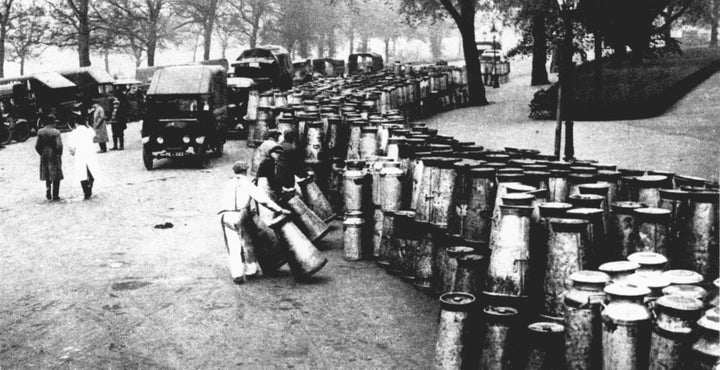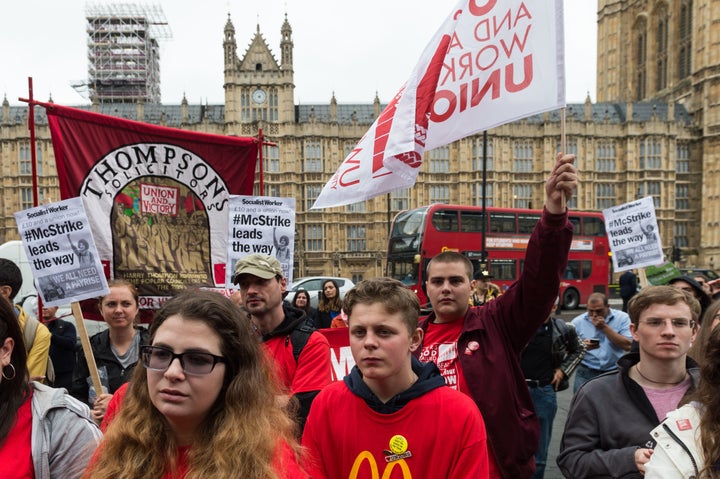
Laura Smith may have caused a stir up and down the country on Tuesday, when she used her time on stage at a Momentum rally to urge Brits to “bring an end to this government with a general strike”.
The Labour MP argued industrial action should be seen as a viable alternative to another general election, winning rounds of applause for saying “we must topple this cruel and callous Tory government as soon as we can”.
Inside the event’s Liverpool venue, Smith’s reception was astounding – but if people feel inspired, how could they act on her rallying call? Realistically, how easy it is to take industrial action, and would a general strike be possible in today’s climate?
Let’s start with the basics...
What is a general strike?
In short: It’s a very large strike. The main thing that separates a general strike from regular ones is the scale, as it sees a majority of a country’s labour force walk out.
This means workers from multiple companies and industries take part – whereas regular strike action is usually limited to one, and often concerns employees of a single company, such as Southern Rail.
When did it last happen here?
The most recent general strike in England was not recent at all, taking place in 1926. The industrial action was a direct response to tensions in the coal industry and in the two days prior to the walkout, miners across the country had been locked out of their workplaces in a dispute with the mine owners over pay.
The Trade Unions Congress (TUC) – which today brings together more than 5.5m workers – called for a sympathy strike from its members and 1.75m, mainly in the transport and steel industries, responded by downing tools at 11:59pm on 3 May.

As a result, transport networks came to a halt and printing presses stopped, while food deliveries were held up as roads clogged with traffic. Rising tensions saw fights breaking out in cities across the UK, with extra police being deployed to keep things under control.
How did that go?
The aim had been to improve workers’ pay but after nine days of striking while they held secret talks, the TUC called the action off – with no announcement of a change of conditions for the miners.
It’s perhaps for this reason that Labour MP Tom Watson was quick to denounce Smith’s speech, calling it an “absolute failure for the working class” and reminding everyone that Prime Minister Stanley Baldwin remained in power throughout the 1926 strike, and after it.
In order to prevent another general strike happening, Baldwin also implemented the 1927 Trades Disputes Act, which banned sympathy strikes and mass pickets.
This was repealed in the 1940s, before being revived by Margaret Thatcher in the 1980s, and it now forms part of the Trade Union and Labour Relations (Consolidation) Act of 1992, which dictates workers’ rights in relation to striking and unions.
How would a general strike work today?
First of all, it would need to be officially organised and coordinated by trade unions, who legally have to ballot members before calling for industrial action.
The TUC could vocalise support for one, but it would be up to the individual trade unions to action the ballots required for any strikes to take place.
This has to be via a secret postal vote and the majority of respondents need to want industrial action – for example, if 100 people are balloted, 51 need to reply in favour for the strike to go ahead. Any ballot forms not returned are counted as a no vote.
Technically, if enough unions successfully balloted workers and set the same date for action, then a general strike of sorts could happen.

But one – rather important – issue is that union members can only be balloted on issues relating to workplace disputes, as the TUC’s WorkSmart advice website explains. A ballot cannot take place in response to political issues – which means Smith’s grounds for a general strike are slightly shaky.
As has already been pointed out, general strikes are not Labour or TUC policy either so while she won a standing ovation at conference, it’s unlikely officials will back Smith’s rallying cry.
Okay. Probably no general strike… but what about regular ones?
While most of the strikes that hit headlines sees hordes of workers walk out, numbers needn’t be in their thousands, or even hundreds, for action to take place. It doesn’t have to be company-wide either.
Take workers at two Wetherspoon’s branches in Brighton, who have complained about being “underpaid and undervalued” by the company. After meeting together to talk about conditions, around 50 workers – a small percentage of Wetherspoon’s 17,000 employees – joined the Bakers Union and staged the required ballot.
When all votes were counted, they had unanimously opted for a walkout and as a result, those balloted will step away from the bars and kitchens for the day in October.
They’re proof that while the general strike probably is off the cards, a regular one is entirely doable, as long as things are well-organised – but it probably won’t get you a change of government.
